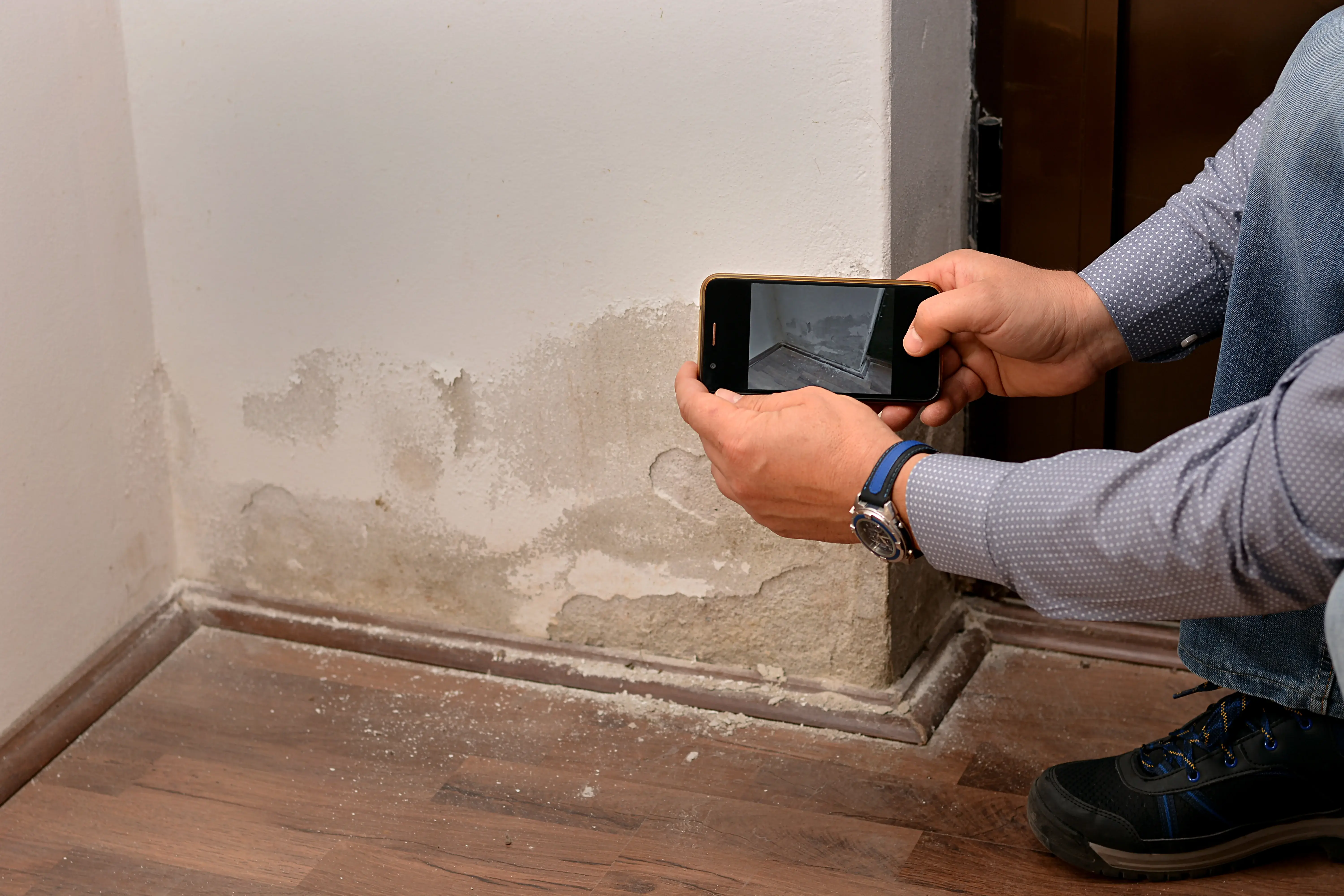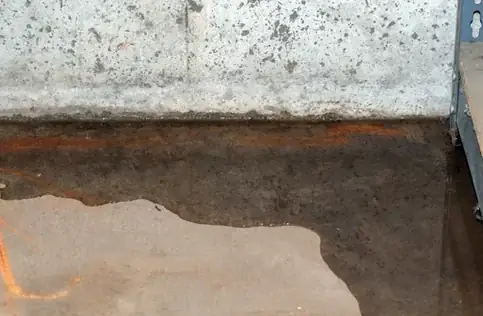Understanding Hydrostatic Pressure
Water coming through your basement floor is one of the most serious and challenging waterproofing problems Toronto homeowners face. Unlike wall leaks, floor seepage indicates hydrostatic pressure—the force of groundwater pushing up from below. This pressure can reach enormous levels, especially in Toronto's clay soil conditions, making traditional surface treatments ineffective.
Critical Warning
Water coming through basement floors indicates serious hydrostatic pressure that can cause structural damage, foundation heaving, and create dangerous conditions. This problem typically worsens rapidly and requires immediate professional intervention to prevent catastrophic damage.
The Science of Hydrostatic Pressure
How Hydrostatic Pressure Works
Pressure Formation
- Water accumulation: Groundwater accumulates around and below foundation
- Pressure buildup: Water exerts upward force of 62.4 lbs per cubic foot
- Force multiplication: Pressure increases with water depth and basement size
- Path of least resistance: Water finds cracks, joints, and porous areas
Toronto-Specific Factors
- Clay soil: Poor drainage traps water near foundations
- High water table: Lake Ontario proximity raises groundwater levels
- Seasonal variation: Spring snowmelt creates peak pressure periods
- Aging infrastructure: Old foundations lack modern pressure management
Real-World Pressure Example
Scenario: 1000 sq ft basement, water table 3 feet below floor
- • Water pressure: 3 ft × 62.4 lbs/ft³ = 187.2 lbs/ft²
- • Total upward force: 187,200 lbs (93.6 tons)
- • Equivalent weight: 65 mid-size cars pressing upward
This enormous force explains why surface treatments fail and professional pressure management systems are essential.
Common Entry Points and Failure Modes

Primary Failure Points
Floor-Wall Joints (Cove Joints)
The junction where basement floors meet walls is the most common failure point.
- • Natural expansion joint between concrete pours
- • Often sealed with basic caulk that fails under pressure
- • Accounts for 60% of basement floor water intrusion
Floor Cracks
Concrete floor cracks from settling, shrinkage, or pressure.
- • Can be hairline initially but widen under pressure
- • Often follow construction joints or weak points
- • May indicate underlying structural issues
Utility Penetrations
Pipes, drains, and cables create weak points in floor slabs.
- • Sealant failure around penetrations
- • Settlement gaps around rigid pipes
- • Poorly sealed floor drains
Pressure Indicators
Visual Signs
- • Water seepage during/after rain
- • Damp spots that expand over time
- • White mineral deposits (efflorescence)
- • Mold growth in affected areas
- • Musty odors that worsen seasonally
Seasonal Patterns
- • Worst during spring snowmelt
- • Increases during heavy rain periods
- • May appear dry during summer months
- • Problems return predictably each year
Progressive Symptoms
- • Small seepage becomes active flowing water
- • Affected area expands each season
- • Standing water in severe cases
- • Floor tiles lifting or buckling
Emergency Response Procedures

Immediate Emergency Actions
First 24 Hours
- 1 Safety first: Turn off electricity to affected areas
- 2 Document everything: Photos, videos, measurements for insurance
- 3 Remove belongings: Move items to dry areas immediately
- 4 Water removal: Use pumps, wet vacuums, or call emergency services
- 5 Professional assessment: Call basement waterproofing specialists
Temporary Mitigation
- Dehumidifiers: Multiple industrial units to control humidity
- Air circulation: High-velocity fans to prevent mold growth
- Temporary barriers: Plastic sheeting to isolate affected areas
- Monitoring: Track water levels and entry points
Critical: Temporary measures only buy time. Hydrostatic pressure requires permanent professional solutions.
Professional Solution Systems
Interior Drainage Systems
The most effective solution for hydrostatic pressure, interior drainage systems capture water before it can damage your basement and redirect it safely away.
System Components
- Perimeter drain: Concrete-free channel around basement perimeter
- Collection pipes: Perforated pipes in gravel bed
- Sump basin: Collection point with automatic pump
- Discharge system: Pipes to remove water from property
- Vapor barrier: Directs wall moisture to drainage system
System Benefits
- Works with hydrostatic pressure instead of fighting it
- No exterior excavation required
- Effective in all soil conditions
- Can be installed year-round
- Long-term warranties available
Cost Range
$8,000 - $15,000 for typical Toronto basement
Installation Time
3-5 days depending on basement size
Advanced Sump Pump Systems
Modern sump pump systems are the heart of hydrostatic pressure management, automatically removing water before it can cause damage.
Primary Pump
- • High-capacity submersible pump
- • Automatic float switch activation
- • Cast iron or stainless steel construction
- • 3,000-5,000 GPH capacity typical
Backup System
- • Battery-powered backup pump
- • Activates during power failures
- • 8-24 hour operation time
- • Independent float switch
Monitoring
- • WiFi-enabled alarm systems
- • High water level alerts
- • Pump failure notifications
- • Battery level monitoring
Critical Design Features
- • Sealed sump basin with airtight lid
- • Check valve prevents backflow
- • Discharge line freeze protection
- • Multiple pump capacity for peak flows
- • Separate discharge routes for redundancy
- • Professional installation and testing
Structural Crack Repair
For active cracks allowing water penetration, specialized injection techniques create permanent seals that withstand hydrostatic pressure.
Injection Methods
Polyurethane Injection
Best for: Active water leaks, flexible movement
Expands when in contact with water, creating flexible, waterproof seal
Epoxy Injection
Best for: Structural repair, stable cracks
Creates rigid bond stronger than original concrete
Process Steps
- 1 Clean and prepare crack surface
- 2 Install injection ports at intervals
- 3 Seal crack surface except at ports
- 4 Inject material under pressure
- 5 Allow curing and test seal integrity
Success Rate: 95% effective when combined with proper drainage. Not suitable as standalone solution for high hydrostatic pressure situations.
Prevention and Long-term Management
Preventive Measures
- Proper exterior grading: Ensure ground slopes away from foundation
- Gutter maintenance: Keep gutters clean and extend downspouts away
- Window well maintenance: Proper covers and drainage
- Regular inspections: Annual professional assessments
System Maintenance
- Sump pump testing: Monthly operation checks during wet season
- Battery backup maintenance: Annual battery replacement
- Drainage system cleaning: Professional cleaning every 3-5 years
- Monitoring systems: Regular check of alarms and sensors


